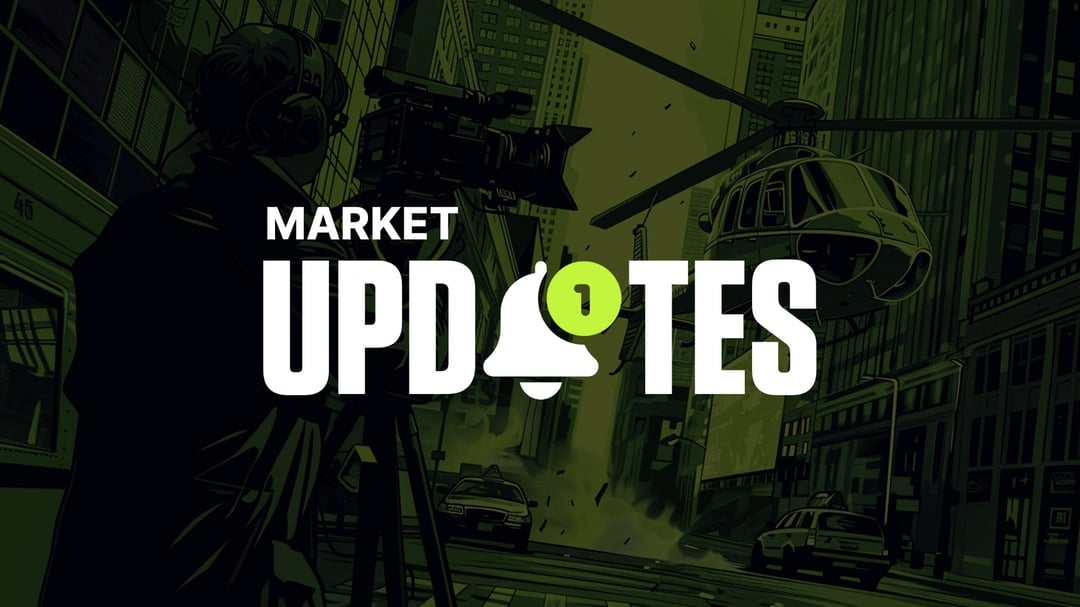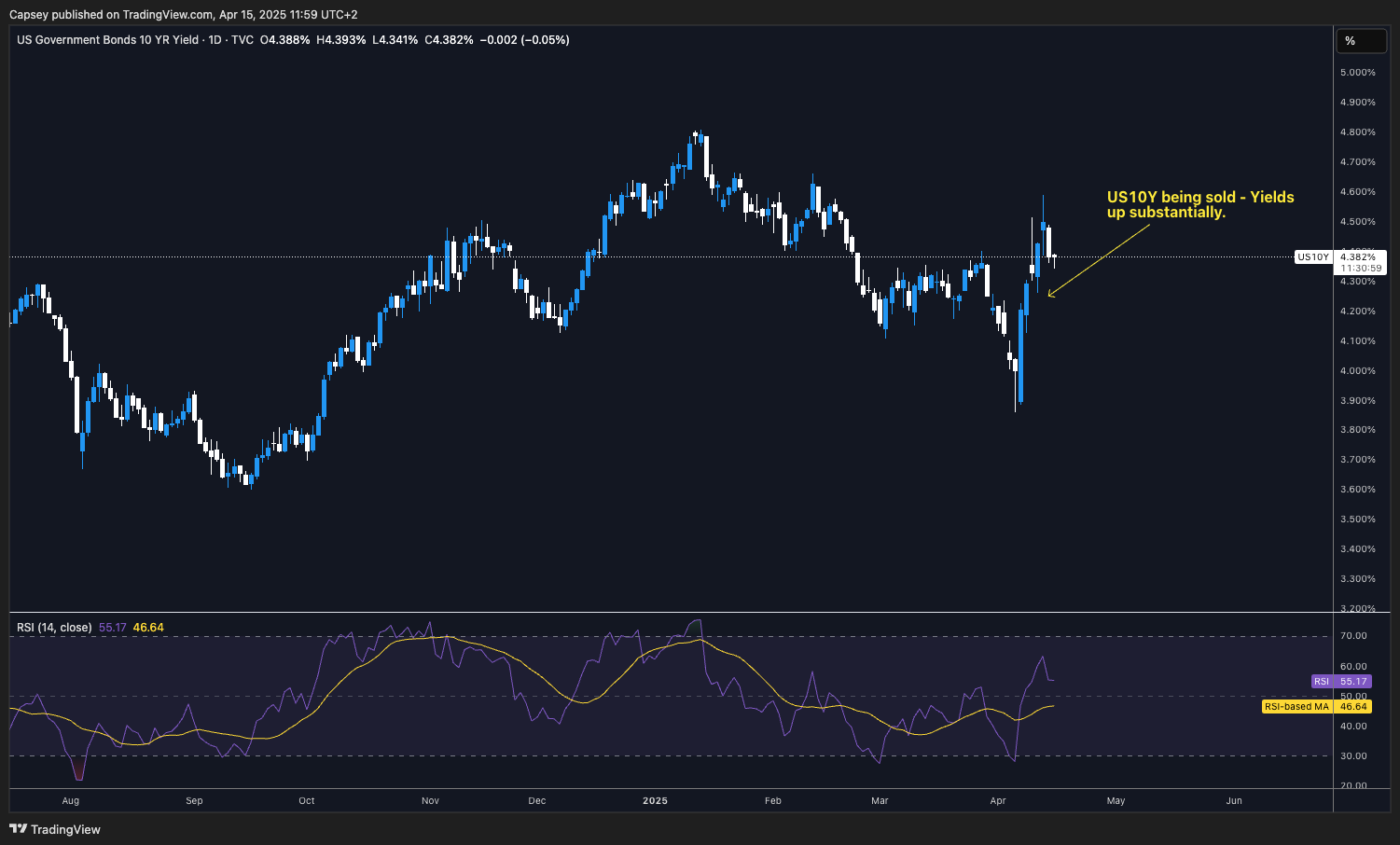
In this report:
- Last Week's Data and This Week's.
- Tariffs & Continued Uncertainty.
- Simply Put, What Does This Mean?
- Cryptonary's Take - What's Our Plan From Here?
Disclaimer: This is not financial or investment advice. You are responsible for any capital-related decisions you make, and only you are accountable for the results.
Last week's data and this week's
Last Friday, we had the Michigan Sentiment surveys release, which were pretty dreadful. Their Consumer Sentiment survey continued to show a meaningful decline, with consumer sentiment now down 30% since December 2024.This essentially means the consumer's level of confidence in the economy is rapidly declining, and this is mostly due to the ongoing trade wars.
Michigan consumer sentiment:
Alongside this, the Inflation Expectations survey soared higher, and it continued its multi-month uptrend. This is not what the administration or the FED will want to see, as rising Inflation Expectations will see the consumer pullback and likely increase the chances of a slowdown.
And, if Inflation Expectations become entrenched, companies will naturally raise prices (to keep up) until a more meaningful slowdown materialises.
Michigan 1-year inflation expectations:
If we then turn to this week's data, other than Retail Sales, there aren't any major releases. Retail Sales is expected to rebound to 1.2%, from just 0.2% that we saw last month. This would show the consumer is still hanging in there and spending for now.
What's next?
With inflation expectations rising by 1.2% and consumer sentiment dropping 30% since December, how will the market respond?Tariffs & continued uncertainty
We've covered this many times and in phenomenal length, so we're going to assume all readers are up to speed with our recent reports, and we'll continue on.Last week, we saw tariff retaliation escalate to numbers that essentially put China and the US under trade embargoes with each other, so any further retaliation in the tariff numbers will mostly be looked through. There are other ways for China and the US to retaliate aside from just tariffs, but that aside for now, we do feel here that peak fear/hawkishness on the tariff front is behind us.
We've had the tariffs go on, and then the retaliations happen, it's hard to see how it can more meaningfully escalate from here, particularly when it seems that both sides need a deal. But neither wants to be the party that reaches out and comes to the negotiation table first.
Now, even though tariff escalation has probably peaked, and therefore peak bearishness is probably behind us, the uncertainty remains, which means risk assets are likely to continue to struggle for any substantial upside. That is until the FED begins cutting interest rates, which probably isn't until June at best (more likely July) - or Trump and Xi come to a trade deal.
Last week, we saw a deleveraging of longer duration US treasuries, however this may have been added to by China also selling some of its treasuries to exasperate the problem of Yields moving significantly higher - this is the opposite of what the administration is trying to achieve, and hence this may have been a form of retaliation from China to sell some of its US treasuries into what was an illiquid off the run, longer duration treasury market.
This resulted in Bessent yesterday saying that the Treasury "could up buybacks" if he felt the Treasury needed to. This would essentially be the Treasury stepping in to buy longer-dated Treasuries and providing liquidity to that market that has become more illiquid recently.
The Treasury stepping in and adding liquidity would stabilise the longer-end of the Bond market. The result of this has been that US10Y and US30Y Bond Yields have declined, off the back of a week which saw them soar higher, which wasn't what the administration and the Treasury wanted to see.
Last week's move in the US10Y yield:

Simply put, what does this mean?
The administrations 'stop-start' policies around the trade war are causing the overall level of uncertainty to remain high. This has resulted in a flight out of US assets, with risk assets being hit the hardest.It has now escalated into the Bond market, where Yields have risen substantially over the last week, and this has seen Scott Bessent (US Treasury Secretary) suggest that the Treasury can "step up their buyback program" if needed.
This uncertainty, and resulting slowdown, isn't good for risk assets. And, despite the fact that we think peak tariff uncertainty is behind us, the economic slowdown we're likely to see off the back of this is what's likely to come, risk appetite subdued and therefore risk assets probably continuing to trend lower.
Cryptonary's take - what's our plan from here?
If we're right in that peak tariff/trade war uncertainty is now behind us, that may mean volatility is more subdued, so we'll see less of these really extreme and fast moves.But, due to the uncertainty remaining, we expect the downtrend to continue for risk assets and therefore Bitcoin, but rather a slow grind lower rather than a 'puke out' for instance.
Therefore, over the next 3-10 weeks (it's hard to put an exact range on it, and we'll be manoeuvrable), we'll let price make that grind lower, and we'll look to accumulate Bitcoin in the Green Buy Box, between $63,400 and $75,500. This would be for at least a 12-month view, so this is for long-term Spot accumulation rather than short-term trades.
BTC:
In the short term, we may consider Shorts again, but for Bitcoin, we'd probably want to see $89k to $91k be tested as a retest of the main horizontal resistance and then look to Short that level. We'd only look for Shorts if we're given attractive entries.
For the other Majors (ETH, SOL and HYPE), we've begun identifying Spot accumulation levels (check Market Direction reports), but we'll ease into these Spot buys with smaller USD size. The reason is that when Bitcoin bottoms, ALTS can take more time to bottom, so we should be responsive and considerate of that in our accumulation strategy.
We see the upcoming weeks as being key, and we'll look to take advantage of them by accumulating long-term Spot bags, whilst the market is weathering the macro storms.
We expect to get a number of FED interest rate cuts in the second half of 2025, and we want to be well-positioned for that, hence our focus is on accumulating longer-term Spot bags again over the coming weeks and months. But, remember, flexibility and manoeuvrability are key here as we're in a really strongly data-driven environment.



